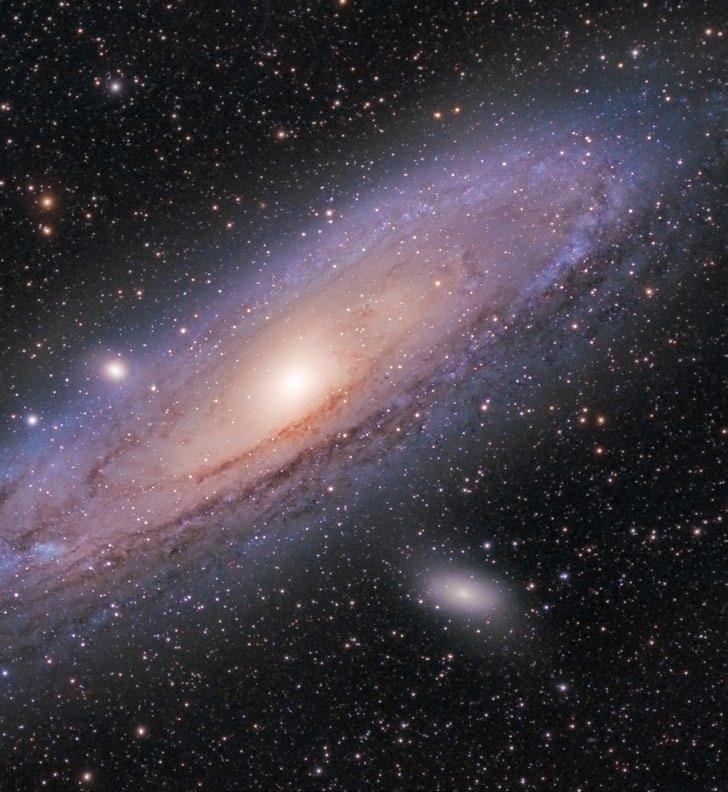
4 minute read
Reconstructing relative sea-level change in northwest Iceland Martin Brader
Martin Brader
Advertisement
Image caption: Hvitserkur basalt stack aka Dragon Rock in northwest Iceland
Relative sea-level data are used in a variety of locations to establish patterns of ice loading from glaciation and unloading from deglaciation. Such data therefore act as a critical test for models of former ice sheets and earth rheology. These relative sea-level data are particularly valuable from locations where different patterns of ice loading and unloading are modelled, as they can help to distinguish between individual model scenarios.
In Iceland, two contrasting hypotheses of the Last Glacial Maximum glaciation are proposed – maximum and minimum – with very different implications for regional ice volume, freshwater input into the North Atlantic, and therefore global oceanic circulation and climate.
Models outputs show different patterns of relative sea-level change in northwest Iceland under the maximum and minimum glaciation scenarios (e.g. Hubbard et al. 2006). Establishment of the pattern of postglacial relative sea-level change in this region may therefore help to determine likely ice loading patterns and Earth characteristics.
Data can be collected from a variety of terrestrial coastal environments, including coastal lowlands, isolation basins and geomorphological features, such as raised beaches. Coastal lowlands encompass a range of low-elevation coastal environments, including mud flats and saltmarshes. Isolation basins are rock depressions which have been connected to or isolated from the sea. Analysis of microfossils within sediment sequences from coastal lowlands and isolation basins can provide records of environmental and, in turn, relative sea-level change at a range of elevations in a particular location.
Mapping of raised beaches also provides valuable constraint on past sea level, particularly where the local marine limit can be established. The marine limit is the highest point reached by postglacial relative sea-level in a particular location (Andrews, 1970) and comparison of elevations between locations can demonstrate differences in ice loading and the pattern of deglaciation (Norðdahl and Ingólfsson, 2015).
Integration of data from a range of environments can produce a relative sealevel curve for a particular location, which provides an overview of relative sea-level changes from deglaciation to present (e.g. Lloyd et al., 2009, Brader et al., 2015). Given the contrasting ice loading and unloading scenarios for northwest Iceland, we investigate isolation basins, coastal lowlands and raised beaches at locations across and away from proposed ice loading centres.
During fieldwork, we extract sediment samples from isolation basins at a range of elevations, from the marine limit to present sea-level, in order to establish a comprehensive record of change. Fieldwork involves travelling to remote locations around the Icelandic coastline. There we can establish field camps, from which we hike to individual isolation basins in order to sample them. As a result, the field team is able to experience some of Iceland’s most dramatic scenery, coupled with some excellent campsite cuisine!
Following fieldwork, laboratory analyses of diatoms (unicellular algae) produce assemblages for individual locations, which can be combined with results from dating analyses to produce a sea-level index point – the position of relative sealevel in space and time. In this research, dating is provided by radiocarbon analyses and tephra deposits, which can be correlated to specific dated volcanic eruptions. The generation of a series of sea-level index points produces the aforementioned relative sea-level curve for a location, which can then be compared with other RSL curves to investigate similarities and differences between locations.
Based on field and laboratory analyses, we produce new relative sea-level curves for northwest Iceland (Brader et al., 2017), which allow the testing of different ice loading and unloading scenarios through comparison with existing records (e.g. Rundgren et al., 1997; Lloyd et al., 2009; Brader et al., 2015).
Acknowledgements
This research was supported by the Natural Environment Research Council (NERC), Royal Geographical Society, British Society for Geomorphology, Quaternary Research Association, and Van Mildert College, Durham University. Permission to undertake the research was provided by RANNIS and Umhverfisstofnun Islands
References
Brader MD et al. (2015) Lateglacial to Holocene relative sea-level changes at Stykkishólmur, northern Snæfellsnes, Iceland Journal of Quaternary Science 30 5 497-507 Brader, MD et al. (2017) Postglacial relative sealevel changes in northwest Iceland: evidence from isolation basins, coastal lowlands and raised shorelines Quaternary Science Reviews 169 114-130
Hubbard, A et al. (2006) A modelling insight into the Icelandic Last Glacial Maximum ice sheet Quaternary Science reviews 25 2297-2313 Lloyd JM et al. (2009) Lateglacial to Holocene relative sea-level changes in the Bjarkarlundur area near Reykhólar, North West Iceland Journal of Quaternary Science 24 7 816-831 Norðdahl, H and Ingólfsson, Ó (2015) Collapse of the Icelandic ice sheet controlled by sea-level rise? Arktos 1 13 DOI 10.1007/s41063-015-0020-x










